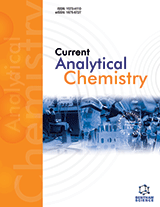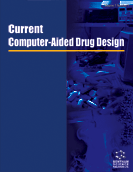Abstract
The mushroom Ganoderma lucidum (G. lucidum) has been used for centuries in Asian countries to treat various diseases and to promote health and longevity. Clinical studies have shown beneficial effects of G. lucidum as an alternative adjuvant therapy in cancer patients without obvious toxicity. G. lucidum polysaccharides (GLP) is the main bioactive component in the water soluble extracts of this mushroom. Evidence from in vitro and in vivo studies has demonstrated that GLP possesses potential anticancer activity through immunomodulatory, anti-proliferative, pro-apoptotic, anti-metastatic and anti-angiogenic effects. Here, we briefly summarize these anticancer effects of GLP and the underlying mechanisms.
Keywords: Ganoderma lucidum polysaccharides, Reishi, anti-cancer, immunomodulatory, anti-proliferative, pro-apoptotic, anti-metastatic, anti-angiogenic.
Graphical Abstract
Anti-Cancer Agents in Medicinal Chemistry
Title:Ganoderma lucidum Polysaccharides as An Anti-cancer Agent
Volume: 18 Issue: 5
Author(s): Didem Sohretoglu and Shile Huang*
Affiliation:
- Feist-Weiller Cancer Center, Louisiana State University Health Sciences Center, 1501 Kings Highway, Shreveport, LA 71130-3932,United States
Keywords: Ganoderma lucidum polysaccharides, Reishi, anti-cancer, immunomodulatory, anti-proliferative, pro-apoptotic, anti-metastatic, anti-angiogenic.
Abstract: The mushroom Ganoderma lucidum (G. lucidum) has been used for centuries in Asian countries to treat various diseases and to promote health and longevity. Clinical studies have shown beneficial effects of G. lucidum as an alternative adjuvant therapy in cancer patients without obvious toxicity. G. lucidum polysaccharides (GLP) is the main bioactive component in the water soluble extracts of this mushroom. Evidence from in vitro and in vivo studies has demonstrated that GLP possesses potential anticancer activity through immunomodulatory, anti-proliferative, pro-apoptotic, anti-metastatic and anti-angiogenic effects. Here, we briefly summarize these anticancer effects of GLP and the underlying mechanisms.
Export Options
About this article
Cite this article as:
Sohretoglu Didem and Huang Shile*, Ganoderma lucidum Polysaccharides as An Anti-cancer Agent, Anti-Cancer Agents in Medicinal Chemistry 2018; 18 (5) . https://dx.doi.org/10.2174/1871520617666171113121246
| DOI https://dx.doi.org/10.2174/1871520617666171113121246 |
Print ISSN 1871-5206 |
| Publisher Name Bentham Science Publisher |
Online ISSN 1875-5992 |
 72
72 7
7 2
2 1
1
- Author Guidelines
- Bentham Author Support Services (BASS)
- Graphical Abstracts
- Fabricating and Stating False Information
- Research Misconduct
- Post Publication Discussions and Corrections
- Publishing Ethics and Rectitude
- Increase Visibility of Your Article
- Archiving Policies
- Peer Review Workflow
- Order Your Article Before Print
- Promote Your Article
- Manuscript Transfer Facility
- Editorial Policies
- Allegations from Whistleblowers
Related Articles
-
Shedding Light on Serum Vitamin D Concentrations and the Risk of Rarer Cancers
Anti-Cancer Agents in Medicinal Chemistry Editorial [Hot Topic:Angiogenesis Agents(Executive Editor: Cezary Marcinkiewicz)]
Current Pharmaceutical Design Regulation of MicroRNAs by Phytochemicals: A Promising Strategy for Cancer Chemoprevention
Current Cancer Drug Targets Epigenetic Modifications: New Therapeutic Targets in Primary Myelofibrosis
Current Stem Cell Research & Therapy An Approach to Treatment of Liver Cancer by Novel Glycyrrhizin Derivative
Anti-Cancer Agents in Medicinal Chemistry Innovations in siRNA Research: A Technology Comes of Age
Recent Patents on Anti-Infective Drug Discovery Pharmacogenomics of Osteoporosis
Current Pharmacogenomics Patent Selections
Recent Patents on Biotechnology Editorial (Thematic Issue: Chemoinformatics Models for Pharmaceutical Design, Part 2)
Current Pharmaceutical Design Use of Biochemical and Microscopic Techniques to Determine Enhanced Skin Permeation of Nanovesicles: A Mechanistic Study
Pharmaceutical Nanotechnology A Systems Pharmacokinetic and Pharmacodynamic Approach to Identify Opportunities and Pitfalls in Energy Stress-Mediated Chemoprevention: The Use of Metformin and Other Biguanides
Current Drug Targets Challenges and Solutions in the Development of Genomic Biomarker Panels: A Systematic Phased Approach
Current Genomics Interleukin-6: A Critical Cytokine in Cancer Multidrug Resistance
Current Pharmaceutical Design 1,3,4-oxadiazole-2-thione Derivatives; Novel Approach for Anticancer and Tubulin Polymerization Inhibitory Activities
Anti-Cancer Agents in Medicinal Chemistry A Small-molecule Inhibitor, 5'-O-Tritylthymidine, Targets FAK and Mdm-2 Interaction, and Blocks Breast and Colon Tumorigenesis in vivo
Anti-Cancer Agents in Medicinal Chemistry Systemic Sclerosis-Related Pulmonary Hypertension: Unique Characteristics and Future Treatment Targets
Current Pharmaceutical Design Bio-Inspired Algorithms Applied to Molecular Docking Simulations
Current Medicinal Chemistry Myeloma Cells and Their Interactions With the Bone Marrow Endothelial Cells
Current Immunology Reviews (Discontinued) Early Palliative Care in Advanced Oncologic and Non-Oncologic Chronic Diseases: A Systematic Review of Literature
Reviews on Recent Clinical Trials HIV-1 Vpr: Enhancing Sensitivity of Tumors to Apoptosis
Current Drug Delivery


























